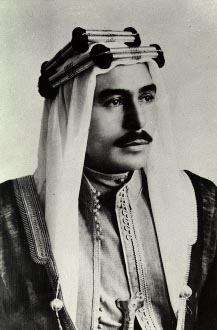Hejazi turban
The Hejazi turban (Arabic: عِمَامَة, ʾimāmah IPA: ʕi.maː.mah), also spelled Hijazi turban or known as the Arabian turban, is a type of the turban headdress native to the region of Hejaz in modern-day western Saudi Arabia.
It is but one version of Arabian turbans that have been worn in the Arabian Peninsula from the pre-Islamic era to the present day.
Many Arab Historians claim that the pre- and post-Islamic Arabs of the Arabian Peninsula region such as the Quraish, Ansar, Qahtanites, Kindites, Nabateans, Qedarites, Adnanites, Himyarites, Lakhmids, Ghassanids, Arabian Jews and others used to wear the turban, as opposed to the Keffiyeh which is popular today in the Arabian peninsula.
Versions
The Arabian Hejazi turban is worn today by some Ulama and Imams. In most countries of the Arabian peninsula, a plain or checkered scarf (called keffiyeh, ghutrah, shumagh or chefiyah), described as a turban is often worn, though the Arabian turban tradition remains strong in Oman (see Sultan Qaboos of Oman), Sudan and some parts of the Arabian peninsula.
The colored or white turban, is a common inherited cultural turban in the regions of Hejaz, and it still the inhabitants costume of Mecca, Medina and Jeddah in particular. the White amamah or Ghatra is the heritage uniform headwear for traders and the general community categories of the prestigious and middle-class, with the exception of religious scholars who have had their special turbans distinctiveness predominately white. The Hejazi turbans with shapes are the extension of the turban of Islamic prophet Muhammad who lived in Mecca and Medina. There are several types of the Ghatra or Shemagh. Colorful turbans called Masar are the national headwear costume in Oman, and also are common in some regions in south of Yemen and Hadhramaut. Moreover, the white ghutrah or shumagh are commonly wrapped in Hamdaniyah style, which is also the shape of turbans in the United Arab Emirates.




.jpg)

